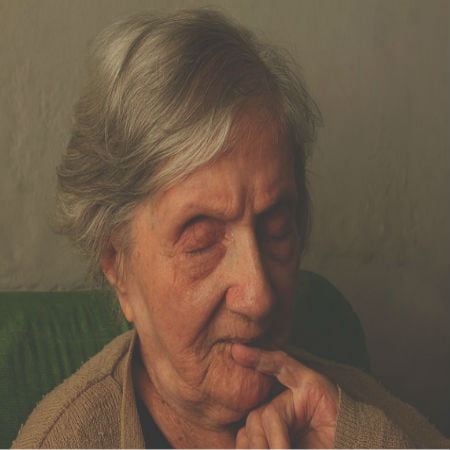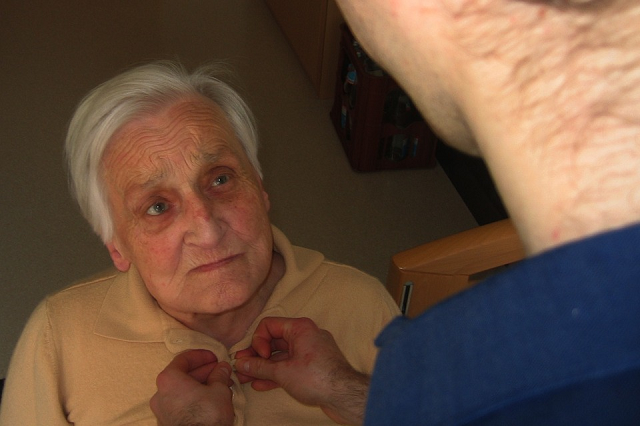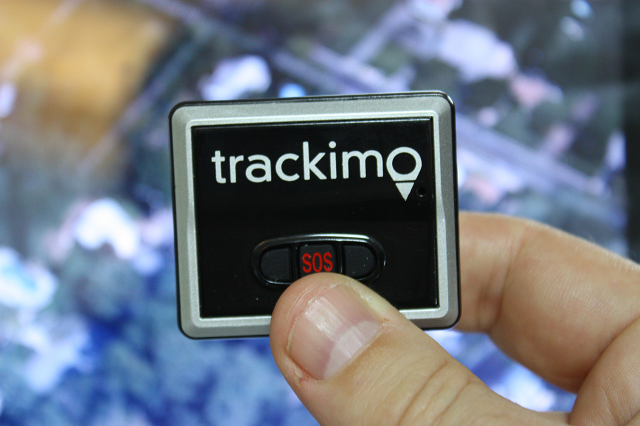
More and more help will be necessary for a loved one once Alzheimer’s disease progresses. There will come a point when even activities of daily living (ADLs) like eating, dressing, and basic hygiene will be forgotten—if their abilities do not deteriorate beforehand. Comforting Alzheimer’s patients could be so hard, but there are tips on how you can ease this burden on a daily basis as you go along with them in their day-to-day activities.
At some point, these patients will need help doing these things, especially to ensure their well-being. ADLs are the things that people need to do every day, ones that most take for granted—until they can’t do so anymore. Then there are also instrumental activities of daily living that allow them to live independently.
Tips in Comforting Alzheimer’s Patients
Scroll down for video

The activities of daily living include eating, bathing, dressing, going to the toilet, and even walking. Instrumental activities, on the other hand, include food preparation, housekeeping and laundry, shopping, and transportation.
Doctors, nurses, psychologists, social workers, and other healthcare professionals measure a patient’s ability to perform these activities as a gauge to their functional ability. Tools such as the Katz ADL Scale and the Lawton IADL Scale are often used to determine the level of care an injured or disabled person needs—sometimes ending with a recommendation for long-term institutional care.
Anxiety, irritability, anger, aggression, apathy, and withdrawal are often listed as symptoms of Alzheimer’s disease. It is likely that these behaviors are to some extent the result of the cognitive recognition that one’s basic abilities are deteriorating and, along with those abilities, one’s independence.
In the physical aspect of Alzheimer’s, memory and cognition become affected and motor control deteriorates. For the patient and the loved ones, it is frustrating to know when these things start happening.
Unfortunately, this cannot be reversed. It is, in its essence, the nature of the disease. However, there are ways to help make these activities easier for patients, or at the very least, make them more doable—by improving one’s quality of life, by prolonging their independence as much as possible, and by comforting Alzheimer’s patients in any possible way.
So how can you help your Alzheimer’s disease patient? Here are some tips:
Create a Safe Environment
The first area of concern should always be safety for comforting Alzheimer’s patients. However, make sure that in keeping them safe, you are not undermining their independence. However, many of the things that we take for granted can be dangerous for someone who has trouble maintaining their focus to being with. Most people associate Alzheimer’s-proofing a house kind of the same as child-proofing it.
Maintain a Routine
A manageable routine is very important to establish a sense of independence for a person with Alzheimer’s. The routine will not have to be extensive, but it should cover the basic activities of daily living and done at the same time and in the same order every day.
Put Your Patient to Work
“Work” does not mean heavy-duty lifting that could exhaust a patient, nor should he be sent to get a job to earn her keep. However, feeling that he is no longer a productive member of the community can be a big blow to anyone—and it can severely hinder them from experiencing the independence that they still crave. Part of comforting Alzheimer’s patients is to keep them busy. Don’t keep your patient from doing his chores. Let him help with washing the dishes, even if you have to re-wash them right after. Let him vacuum or fold the laundry. While it may be another chore to you, it could provide a much-needed sense of accomplishment for someone with Alzheimer’s or dementia.
Provide Physical and Mental Exercises

Newsweek
Like any other human, exercise is necessary for comforting Alzheimer’s patients to maintain a healthy body. However, this is even more important for someone with Alzheimer’s as it extends their time in being physically independent. Give them anything that can help them keep sharp. Select activities according to their abilities and interests. The more enjoyable they find it, the more you can reap the benefits out of them. Games, puzzles, crosswords, and even Soduku could help them keep their mind sharp. Don’t forget to accompany them for regular walks or short jogs as well so that they can stay stronger for longer.
Provide Special Clothing
“Special” does not necessarily mean odd or funny-looking clothes, but for someone who has Alzheimer’s, easier-to-wear clothes should be a top priority. Use shoes with Velcro straps, tube socks, or pullovers and zipper-front shirts and sweaters, just to make it easier for your patient to dress up.
However, as the disease progresses, the more you may have to adjust to the wardrobe—for instance, clothing that cannot be removed by the patient or something that is specially designed for someone who needs assistance.
Provide Other Aids When Necessary
Some aids, like a cane, could help your patient get around better. However, there are a lot of things that could be necessary to make an Alzheimer’s patient’s life better. Specially designed forks and spoons, for instance, could help them eat better by themselves. Sturdy bars that are securely fastened to the wall can make getting in and out of the tub or bath easier and safer. When comforting Alzheimer’s patients, you start by identifying the problem—and find a solution that could help your patient live more comfortably.
Keep a Picture Phone
In the early stages of Alzheimer’s or dementia, patients may still want to go out and about by themselves. However, when they do get confused or lost, it is safer for them to have photo phones so that it can be programmable to their needs. For instance, your patient could program his phone so that all he has to do is press a person’s photo to dial the phone number.
The Need for a GPS Tracker

In the early stages of Alzheimer’s and dementia, the patients tend to wander a lot, especially when they are still grasping the fact that they have the disease. There is no cure yet, that is why comforting Alzheimer’s patients is of utmost importance. Sometimes, though, this is not always easy. In fact, the number of missing people with these diseases have been increasing; and without a proper helpline, some take months, even years before they are found—if they are ever actually found.
GPS trackers like Trackimo are small enough so that it is light enough to carry and can be attached to the belt. Trackimo even has an SOS button in case of emergency, and as long as there’s 2G GSM signal, the devices can be tracked via Web or smartphone, which means that you will always know where your patient is at any time or place.
Six out of ten patients of Alzheimer’s or dementia have the tendency to wander. In comforting Alzheimer’s patients and in keeping them safe, it is necessary to keep track of them—in whatever way you can.
Watch the video below